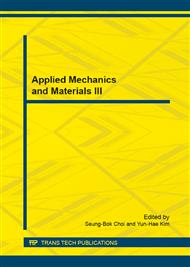p.145
p.150
p.162
p.167
p.171
p.176
p.181
p.186
p.190
3D Numerical Simulation and Experimental Analysis of Spillway Tunnel
Abstract:
A three-dimensional finite element model and an experimental model of a reservoir spillway tunnel are used to analyze the flow velocity changes. The basic numerical simulation theory and the experimental theory and method are firstly introduced. The water characteristic is obtained such as velocity, water surface curve, jet trajectory length, water pressure, etc. The water jet is Z shaped. The velocity, pressure and water flow of the whole spillway are gotten in Ansys software. The velocity measured in the test and the data computed with software are compared. The experimental results are agreement with the numerical results. The analysis and experimental progress and results show that the numerical model and the test method are feasible and well-suited for using in actual design problems.
Info:
Periodical:
Pages:
171-175
Citation:
Online since:
January 2015
Authors:
Keywords:
Price:
Сopyright:
© 2015 Trans Tech Publications Ltd. All Rights Reserved
Share:
Citation:


